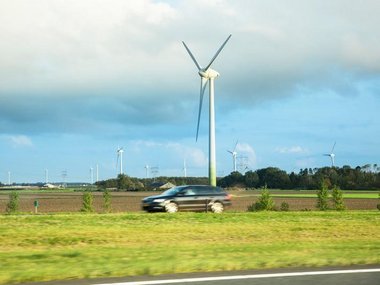The entire process is based on blockchain technology. This blockchain project is part of a wider TenneT programme that includes pilot projects aimed at increasing the flexibility of the electricity system, in order to accommodate the substantial increase in sustainable electricity production (mainly from wind and solar energy) at the expense of conventional power plants. By optimizing data usage and developing new flexible options, TenneT will make the electricity grid suitable for the challenges posed by the energy transition.
Flexibility through decentralization
In its capacity as Transmission System Operator (TSO), TenneT is responsible for maintaining the balance between the supply of and demand for electricity on the grid (a process known as ‘balance maintenance’). The energy transition presents challenges for TenneT. Electricity supply and demand must be carefully balanced at all times. For that reason, TenneT is looking for new decentralized energy sources that offer greater flexibility. One possible solution is based on combining a large number of smaller, decentralized energy sources, such as (storage) batteries. By collaborating with a so-called aggregator (in this case Vandebron) and applying blockchain technology, the capacity of all the pooled batteries can be utilized, enabling consumers to contribute directly to the energy transition.
Active participation of electric car owners in the energy transition
The pilot project works as follows: Vandebron supplies power to TenneT for balance maintenance purposes. The electricity originates from the charging sessions of Vandebron customers who own electric vehicles. The charging of the vehicles can be started or stopped at TenneT’s request. Vandebron has developed an algorithm for this purpose. A number of Tesla drivers are participating in the pilot project by means of an app. Vandebron is facilitating this service for its customers, who receive a fee for their contribution.
TenneT CEO Mel Kroon: “This pilot project provides TenneT with a new way to integrate decentralized electricity sources more efficiently, while simultaneously safeguarding the security of supply. What’s more, we are offering members of the public a wonderful opportunity to play an active role in the energy transition.”
Matthijs Guichelaar, co-founder of Vandebron: “Using a new service to push the energy market in the right direction – that is Vandebron’s approach to innovation. One of the greatest challenges facing the energy sector is that we need to develop solutions for periods when the supply of sustainable electricity is insufficient to meet the demand. By using smart charging strategies, we are now able to work with consumers to maintain the balance on the grid without relying on gas- and coal-fired power plants.”
‘Green’ blockchain solution
The solution applied in this project is based on private rather than public blockchain technology. Public blockchain technology is used for the Bitcoin digital currency, for instance. Because a private blockchain does not use the computing power of an enormous number of computers, its electricity consumption is low.
TenneT is currently carrying out a similar pilot project in Germany, using a blockchain network and batteries in homes to prevent grid congestion.





